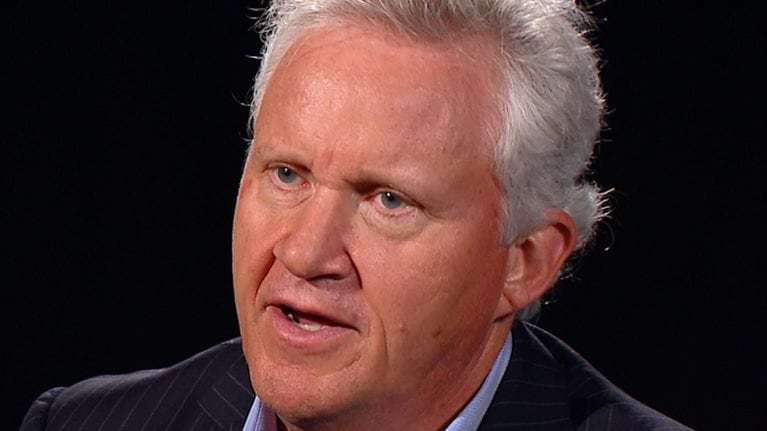The almost insatiable demand for leadership studies is a natural outgrowth of the all-too-frequent leadership failures in government, business, and nonprofits. Few people trust their leaders, according to the Edelman Trust Barometer surveys, among others.1 Gallup data show low levels of employee engagement worldwide, while the Conference Board finds job satisfaction at a low ebb and executive tenures decreasing.2 Other research consistently indicates that companies give their own leadership-development efforts low marks. Leaders aren’t doing a good job for themselves or their workplaces, and things don’t seem to be improving.
This consuming interest in leadership and how to make it better has spawned a plethora of books, blogs, TED talks, and commentary. Unfortunately, these materials are often wonderfully disconnected from organizational reality and, as a consequence, useless for sparking improvement. Maybe that’s one reason the enormous resources invested in leadership development have produced so few results. Estimates of the amount spent on it range from $14 billion to $50 billion a year in the United States alone.3
The limits of morality tales
Despite the many shortcomings of leadership instruction, some books and articles do provide fruitful guidance on how to be a better, more effective leader. And there’s scattered information about what skills and behavior are needed to get things done and how to develop them. Sadly, and for a number of reasons, there’s a scarcity of useful material. Here’s why.
The first and maybe most pernicious problem is that thinking on leadership has become a sort of morality tale. There are writers who advocate authenticity, attention to employees’ well-being, telling the truth, building trust, being agreeable, and so forth. A smaller number of empirical researchers, contrarily, report evidence on the positive effects of traits and behavior such as narcissism, self-promotion, rule breaking, lying, and shrewd maneuvering on salaries, getting jobs, accelerating career advancement, and projecting an aura of power. Part of this discrepancy—between the prescriptions of the vast leadership industry and the data on what actually produces career success—stems from the oft-unacknowledged tendency to confuse what people believe ought to be true with what actually is. And underlying that is an associated confirmation bias: the tendency to see, and remember, what you’re motivated to believe.
Second, this moral framing of leadership substantially oversimplifies the real complexity of the dilemmas and choices leaders confront. An essay on the 500th anniversary of the writing of Machiavelli’s The Prince noted that it is sometimes necessary to do bad things to achieve good results.4 Not surprisingly, then, some of the most successful and admired leaders—for example, Nelson Mandela, Abraham Lincoln, and John F. Kennedy—were above all pragmatists, willing to do what was necessary to achieve important objectives.
As such, each of them (and many other renowned leaders) changed their positions on decisions and issues and behaved inconsistently. They dissembled and engaged in strategic misrepresentation, not always disclosing their full agendas and plans, in part to avoid provoking opposition. At times, they acted in ways inconsistent with their authentic feelings. Human beings are complex and multidimensional, so not only do bad people do good things and vice versa but the whole idea of good and bad can also be problematic when you consider the knotty dilemmas leaders face deciding whether the ends justify the means.
Finally, the division of leaders and their actions into good and bad seriously oversimplifies a much more complex reality and continues to reinforce a problematic, trait-based, and personality-centric view of human behavior. As social-psychological research has made clear for decades, people are not only shaped by their enduring traits but also profoundly influenced by cues and constraints that vary by situation. So they adopt different types of behavior and even personas, depending on the circumstances and the various roles they play. Leaders may behave differently within their families and religious institutions than they do at work, to take one example. When individuals are promoted to management, their perspectives change and so too does their behavior. McKinsey research also suggests that the effectiveness of various types of leadership behavior varies with the health of the organization in which they are practiced (see “Leadership in context”).
Characterizing leaders’ behavior as somehow dependent on inherent traits provides an easy excuse for avoiding the sort of behavior and strategies that may be required to get things done. To take a simple example, people sometimes tell me that they are not networkers, as a way of explaining their reluctance to build the social relationships so necessary for success. I remind them that they were not born walking or using the toilet either. Networking behavior and skills, like all such behavior and skills, can be learned, as University of Chicago sociologist Ronald Burt has nicely demonstrated.5
Lessons from artful leaders
The focus on leadership should be about useful behavior rather than overly simplistic, and therefore fundamentally inaccurate, categorizations of people and personalities. Not surprisingly, the materials I find most useful for teaching leadership accurately describe the types of behavior, and the underlying social-science evidence and principles, that are needed to get things done in complex, interdependent systems in which people pursue multiple, often conflicting, agendas. Here are lessons drawn from what, in my view, are the best books on leadership.
Build your power base relentlessly (and sometimes shamelessly)

In a second illuminating example, Caro describes how Johnson took what he called a “nothing job,” assistant majority leader (also known as the whip) in the Senate, and turned it into a power base. The fundamental idea: work diligently to create resources that are useful to others and assiduously build relationships, even with enemies. Johnson created tally sheets that he and his aide, Bobby Baker, used to track likely votes by senators. He helped manage the schedule that determined when bills would be considered and votes held. He helped senators get their bills through the House of Representatives with support from its leader (and Johnson’s personal mentor), Speaker Sam Rayburn. He often asked for assistance from, and in the process developed contacts with, powerful Republicans. Johnson built such a reputation for providing useful information and getting things done that when the Democrats retook control of the Senate, after the 1954 election, he became the youngest majority leader in history.
Robert Caro, the Pulitzer Prize–winning biographer, admits to an ambivalence about power, and its use, that should resonate with many leaders. All of his volumes on Lyndon B. Johnson are superb, but my favorite is Master of the Senate. It’s full of lessons, but two stand out. In the chapter “The Orator of the Dawn,” Caro describes how Johnson seduced Senator Hubert Humphrey, a leader among liberals in the Senate, into supporting Johnson and his aims and ambitions. The two men were not natural allies, given the substance of their political positions, their circles of friends, or their personal styles. Nonetheless, Johnson was able to win Humphrey over. When executives tell me that flattery doesn’t work and that people can see through strategic efforts to garner their support, I cite extensive evidence showing that we are generally quite poor at discerning deception. When the deception is coming from a master deceiver and consummate politician like Johnson, the odds of successful resistance are quite low.
Embrace ambiguity . . .

Caro’s other Pulitzer Prize–winning book, The Power Broker, chronicles the 40-year career of New York parks and public-works commissioner Robert Moses. At the age of 35, Moses had little to show for the government-reform efforts he had pushed. His campaign to build parks and public works such as roads and bridges to improve the lives of New Yorkers had stalled, despite the support of a popular governor, Al Smith. In a telling chapter, “Robert Moses and the Creature of the Machine,” Caro describes how Moses finally decided to do deals with the local Republican political bosses on Long Island, who had the clout to turn his plans for public works into realities.
Caro brilliantly explains how Moses decided to pursue immoral or at least questionable actions, such as letting the political bosses and their friends profit from inside information on the proposed paths of parkways and providing these insiders with some of the construction contracts, to accomplish public good, including the creation of Jones Beach. The problem of getting things done in a world of imperfect people and ambiguous choices—a reality that confronts many people in many sectors—comes alive in Caro’s telling.
. . . and eschew popularity contests

Walter Isaacson’s biography Steve Jobs describes another form of behavior, which is sometimes uncomfortable for leaders. The book has provoked controversy over its depiction of Jobs. But there is little doubt that its subject was, on the one hand, a visionary leader who cofounded and built an amazingly successful company, Apple—and helped build another, Pixar—and, on the other, was notoriously hard on the people who worked for and with him. The takeaway: leadership is not about winning popularity contests or being the most beloved person in a social organization. As former Caesars CEO Gary Loveman told my class, “If you want to be liked, get a dog.” Creating things and innovating often disturb the status quo and vested interests. Moreover, the monomaniacal focus and energy so useful (if not essential) in bringing great ideas to life are not always pleasant for those in close proximity.
When the situation demands change—adapt

Team of Rivals, Doris Kearns Goodwin’s lengthy group biography of Abraham Lincoln and three members of his Cabinet, explores the importance of remaking oneself and sometimes putting on a show. Abraham Lincoln certainly did not begin his public life as the heroic figure and transformative president he truly was and for which he became celebrated.
On display throughout the work is how Lincoln remade himself and was willing to do what situational exigencies required—all the while learning, evolving, and developing his leadership skills. Sometimes, this approach to leadership required Lincoln to make deals he was initially uncomfortable with to gain the support of legislators, notably to win passage of the constitutional amendment that outlawed slavery. Sometimes, it required Lincoln to depart from the truth—for example, about precisely where a Southern peace delegation was as it approached Washington and when it might arrive, to give him an opportunity to negotiate privately with its members. Sometimes, it required him to display energy and confidence that he might not really have felt. The ability to do what is required in and by a situation, to behave in usefully inauthentic ways, characterized not only Lincoln but also, I would argue, many other great leaders.
Master the science of influence

No consideration of important lessons in leadership would be complete without noting Robert Cialdini’s Influence: Science and Practice. This ever-evolving book contains a common set of theoretically sound, empirically based principles of interpersonal influence. Cialdini demonstrates, in ways at once evocative of, but also different from, the seminal ideas of Daniel Kahneman and the late Amos Tversky, that people are often cognitively lazy, not just cognitively biased. Our mental shortcuts and unconscious patterns of thought make everyone susceptible to the tactics of interpersonal influence: tactics that depend on the norm of reciprocity, accepting and obeying authority (or its symbols), the power of liking, the value created by scarcity, and the tendency to escalate levels of commitment, even in the face of negative outcomes. Cialdini reminds us that we are all susceptible to these well-known influence strategies, even if we know about them. As a consequence, they represent a set of tools potentially available to anyone who takes the time to learn them and master their use.
The most important message embodied in all of these books is that leadership, the capacity to get things done, is a skill that can be improved like any other, from playing a musical instrument or speaking a foreign language to mastering a sport. The leaders highlighted in these books—Lyndon Johnson, Robert Moses, Steve Jobs, and Abraham Lincoln—and others like them evolved and developed over time. They learned how to weigh what trade-offs they were willing to make and, more important, to size up the circumstances required to achieve their bold objectives.
In so doing, they illustrate what could be possible for those who willingly step into the arena to tackle important, and therefore contested, problems. More critically, they are a caution against self-handicapping and a reluctance to embrace required types of behavior—deficiencies that keep many leaders from living up to their full potential.


